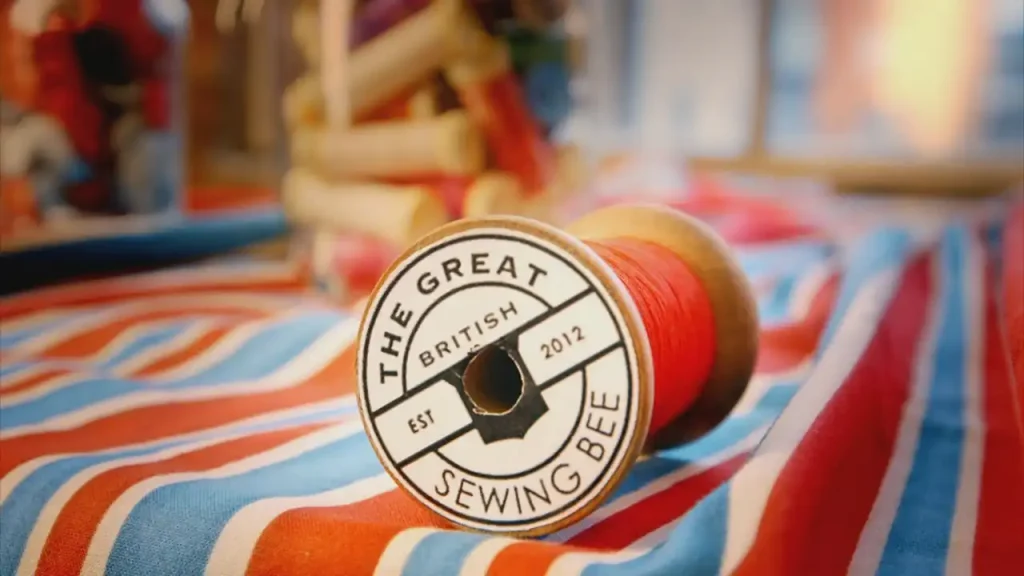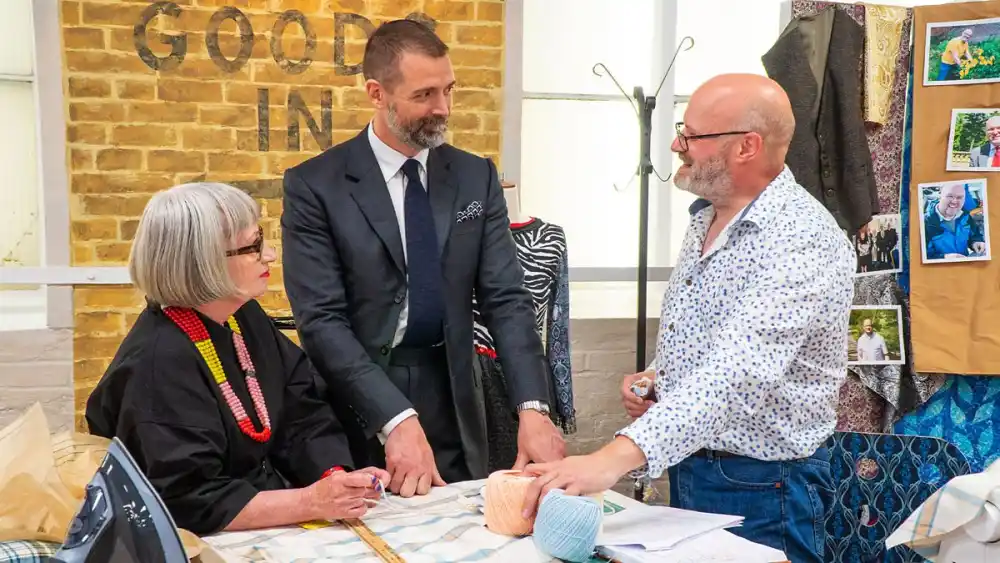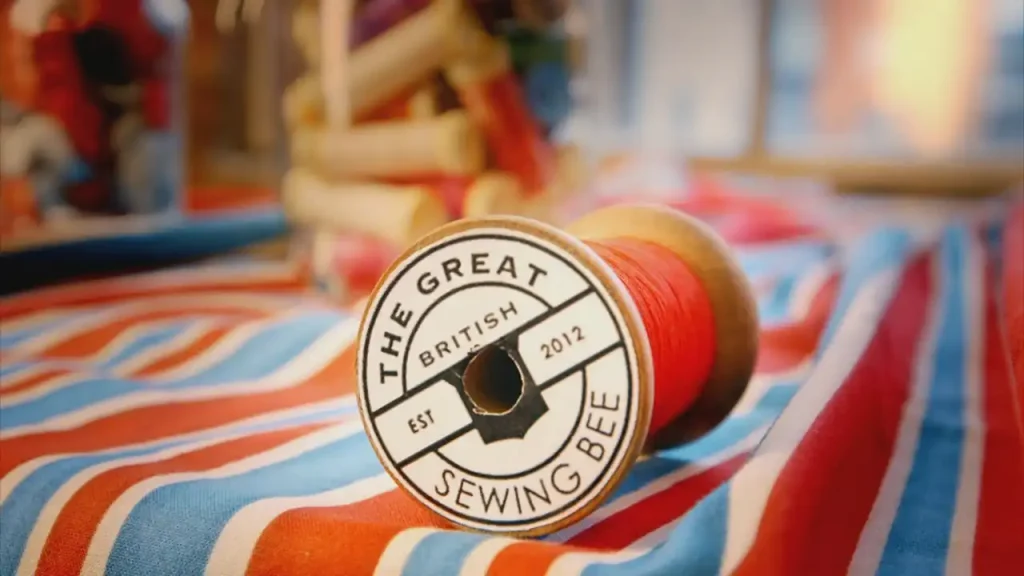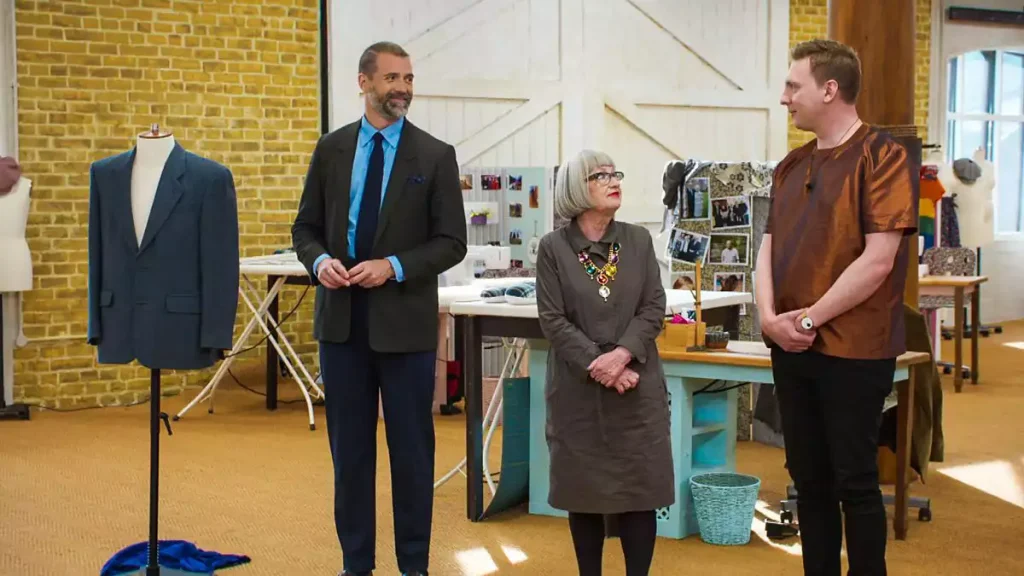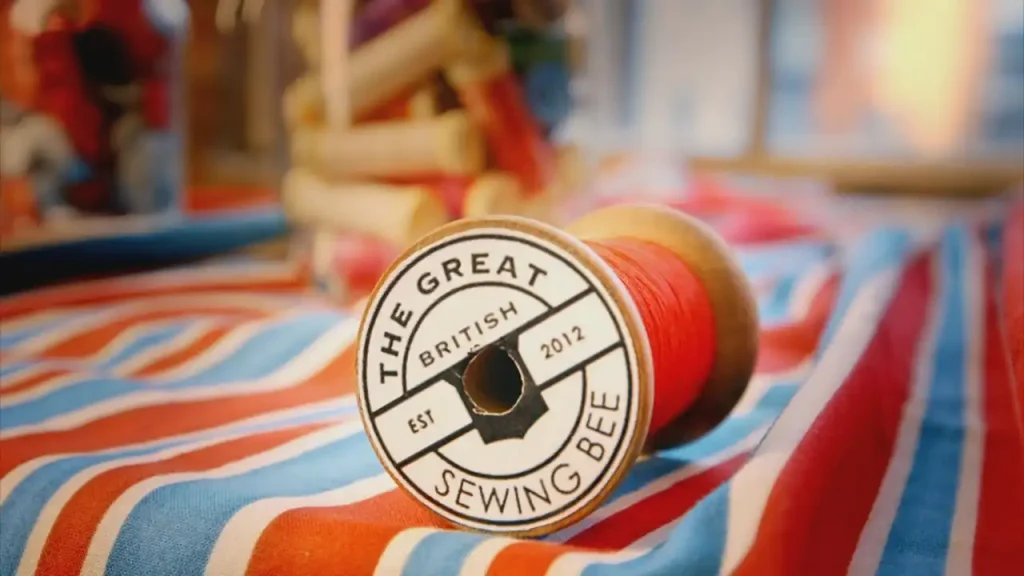The Great British Sewing Bee episode 7 2021 – As the winter season descends upon the sewing room, Joe Lycett takes on the role of a delightful host, bringing warmth and excitement to the chilly atmosphere. The challenges ahead are all beautifully themed around staying cozy and infusing the coldest months of the year with a sparkling touch.
The creativity and skills of the sewers will be put to the test in the first challenge, guided by Patrick and Esme’s expert eye. This week’s Pattern Challenge revolves around crafting a stylish and comfortable man’s flannel shirt. It’s not just about sewing together the various pieces; the contestants must master the art of creating cuffs and collars, which demands a precise sewing technique and utmost attention to detail.
Following the Pattern Challenge, the contestants prepare themselves for the thrilling Transformation round. Bundled up in their own cozy layers, they have a mere 90 minutes to take old scarves and transform them into entirely new, wearable garments. The pressure is on as they showcase their ingenuity and resourcefulness to turn something ordinary into something extraordinary.
But the ultimate test awaits them in the grand finale, the Made to Measure round. The participants must rise to the occasion and design enchanting festive winter party dresses. To add to the complexity, they are entrusted with working with tricky-to-handle fabrics like velvets and sequins. Crafting the perfect fit for their respective models becomes a true challenge, requiring both skill and artistry.
As the tension mounts, the anticipation grows to find out who will win the coveted title of “Garment of the Week.” The judges eagerly await a creation that not only wows them with its exquisite craftsmanship but also warms their hearts with its festive allure. It’s a fierce competition, and the fate of each sewer rests on their ability to impress.
So, as the temperatures drop and the excitement rises, who will emerge as the shining star, winning the admiration of the judges and fellow contestants alike? And who, unfortunately, will have to face the chilly prospect of elimination, bid farewell, and step out into the cold winter night? Only time will tell as this thrilling sewing adventure unfolds before our eyes!
The Great British Sewing Bee episode 7 2021 – Keeping Warm and Sparkling Through Winter in The Great British Sewing Bee
Braving the Chill with the Pattern Challenge
The episode kicked off with the Pattern Challenge, where contestants were tasked with creating a flannel shirt for a man. Sewing flannel may seem simple, but perfectly executing the collar and cuffs on a button-down shirt requires precision. The sewers had to cut and stitch the pieces just right to achieve a polished end product.
Flannel is one of the trickiest shirt fabrics to work with. It frays easily, stretches inconsistently, and resists crisp pressing. As the sewers struggled to tame the fabric, many found their project descending into a wrinkled mess. Frustrations mounted as curled collars, uneven cuffs, and distorted plackets derailed one shirt after another.
In the end, a few contestants triumphed over the flannel and turned out professional-looking shirts. Their technique and experience enabled them to achieve clean lines, crisp edges, and excellent fit around the neck and wrists. The judges declared their work outstanding, though for other sewers, the flannel got the better of them.
Key factors in a successful flannel shirt project
- Careful cutting to ensure straight grain and minimal fraying
- Interfacing the collar and cuffs for added body and structure
- Precise topstitching to prevent stretching and distortion
- Proper pressing with lots of steam to flatten seams
- Perfect button placement for aligning the placket
This difficult challenge truly separated the dedicated sewing masters from the amateurs. It takes skill to tame temperamental fabrics like flannel when constructing garments. The sewers who rose to the occasion proved they have the proficiency to handle anything.
Battling the Elements in the Transformation Challenge
The sewers next faced the Transformation Challenge, where they had to repurpose old scarves into creative new garments in just 90 minutes. Rummaging through boxes of donated scarves, they had to select materials and immediately start cutting and sewing to beat the clock.
Upcycling scarves requires resourcefulness and vision. The sewers could choose to make coats, dresses, skirts, or anything they imagined. Many found the stiff fabrics difficult to work with compared to soft wovens or stretchy knits. The frayed edges and irregular shapes meant puzzles to solve in construction.
Watching colors and patterns clash also posed problems. Aesthetically pleasing designs came from those who could see beyond the individual scarves and envision how they would look combined. This required both creativity and technical skill in planning the shapes and details.
Keys to successfully transforming scarves into wearable items:
- Carefully selecting coordinating colors and complementary patterns from varied fabrics
- Envisioning how the shapes will fit together before cutting to avoid mistakes
- Allowing time to square-up edges and block pieces since scarves often aren’t cut straight
- Sewing samples to test stitch settings before constructing the garment
- Adding lining, interfacing, or edge binding to prevent fraying
The time pressure meant most sewers’ projects turned out a bit makeshift. However, the best transformations showed both artistic flair and fine finishing. The judges were impressed with how some contestants managed to make scarf scraps look chic. Salvaging and remaking items is a sustainable approach to fashion that breathes new life into forgotten fabrics.
Meeting the Made to Measure Challenge
The final challenge of the episode was Made to Measure, requiring the sewers to create a festive winter party dress for a model. They had specialty fabrics like velvets and sequins to work with for a glamorous look. However, velvet and sequins are notoriously tricky to sew.
Velvet frays, puckers, and shifts off grain. Sequins catch in machine needles. Working with both on a fitted party dress had the potential for disaster. On top of that, the sewers had to tailor the dress specifically to their model’s measurements for a perfect custom fit.
They had to stay focused through every step from draping to the final fitting to construct the dress impeccably. Rushed visible seams, gapping bodices, and twisted straps meant starting over. Attention to precision and detail was imperative for success.
Achieving the perfect winter party dress:
- Accurate body measurements and meticulous custom drafting
- Interfacing and understitching to stabilize velvet fabric
- Narrow seam allowances and added ease for comfortable fit
- Hand-sewing sequins in strategic placements for maximum impact
- Steam pressing each seam to keep velvet flat and avoid puckering
- Adjusting the fit in real-time during dress fittings before finishing
Those who took the time to finesse each step delivered stunning garments that wowed. The models exuded holiday glamour in their shimmering dresses. The judges were impressed with the top looks that combined technical excellence with show-stopping style.
Final thoughts on meeting winter sewing challenges
The Great British Sewing Bee’s winter episode truly put the sewers’ skills to the test. From fussy flannel to salvaged scarves to luxurious but tricky velvet and sequins, each challenge showed how fabric choice affects the difficulty of a project. With preparation, patience, and practice, advanced sewers can handle any material and construction method.
The key lessons were having a plan, maintaining precision, and refusing to rush. Technique matters when flawless finishes separate winning looks from disappointing ones. As we approach the holidays and the temptation to craft cozy or glitzy seasonal items, remember to respect your materials. Take your time and don’t let the fabrics defeat you! Just as the contestants battled the elements, we can fight frigid temperatures by curling up in handmade caps, scarves, and quilts. Or embrace indulgence by dazzling at parties in custom frocks and velvet jackets. Sewing sustainably using what we already have brings joy and purpose as we await winter’s thaw.
Conclusion
The Great British Sewing Bee provides an inspiring look into the creativity and skill needed to excel at sewing. As the winter episode showed, being able to handle any fabric or challenge requires dedication to the craft. With the right mindset and techniques, sewers can create beautiful, custom-fitted garments even with temperamental materials. As we seek out sewing projects this season, remember to take inspiration from the contestants’ perseverance. With patience and precision, we can all elevate our sewing skills and make wearable works of art.
Frequently Asked Questions
What are some good techniques for working with tricky fabrics like velvet and sequins?
Choose specialty needles, steam press seams, interface components, hand sew embellishments, and test stitches on scraps. Work slowly and carefully.
How can I get a perfect custom dress fit by sewing my own clothes?
Take accurate measurements, draft a custom pattern, cut precisely, baste first, sew with small seam allowances, perform multiple fittings, and adjust as needed.
What sewing skills are most important for difficult projects?
Planning, precision, patience, problem-solving skills, creativity, and persistence. A willingness to undo and redo steps is essential.
How can I transform old scarves into wearable clothing successfully?
Evaluate colors, patterns, and fabrics first. Envision the end result. Allow extra time to prep pieces. Use interfacing and linings to finish the insides neatly.
What are some essential tools for sewing warm winter clothing and accessories?
An iron, sewing machine, fabric shears, rotary cutter and mat, needle assortment, thread, pins, tape measure, seam ripper, and pressing cloth.
